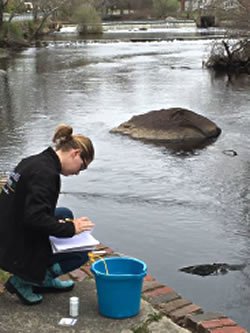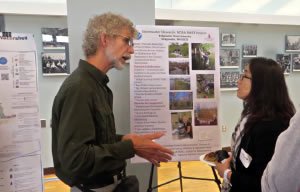Designing Climate Change Solutions with Participatory Planning
August 2020
Here in New England, towns deal with many "wicked problems" requiring multiple solutions. Climate change adaptation is proving to be no different. It is complicated and the terms are so varied that a uniform solution will inevitably fail. Members of the Resilient Taunton Watershed Network (RTWN) joined forces in a Southeast New England Program (SNEP)-funded project to respond to climate change with diverse solutions, tailored to specific local needs. Their successes demonstrate how to turn a limitation into an asset by tackling a seemingly intractable issue at scale.

The project had an unassuming name: Regional Planning and Training on Municipal Tools. Spearheaded by the Southeastern Regional Planning & Economic Development District (SRPEDD), the project's goal was to mainstream nature-based water management strategies in municipal planning—to make it easy for towns in the Taunton River watershed to understand and use innovative methods to respond to climate change. The project's audience, regional and municipal employees, are often busy dealing with everyday problems and have limited opportunities to learn about or design green infrastructure solutions. A training program was needed to fill the gap, and to accomplish the task, SRPEDD was joined by four other RTWN members: Metropolitan Area Planning Council, Manomet Center for Conservation Sciences, Mass Audubon, and The Nature Conservancy.
Together, the partners designed a Geographic Information Systems (GIS)-based green infrastructure analysis, a variety of case studies, and an interactive local training program. The GIS analysis included a green infrastructure map of the Taunton River Watershed, built from existing data to provide an overview of features in the watershed that protect water quality, groundwater recharge, flood control, and biodiversity. Manomet produced the maps and made them available to RTWN members and regional and local planning authorities. The group reviewed a dozen green infrastructure case studies and selected ten to incorporate into the training program. The selected studies showcase a diversity of approaches used within the region. The maps and case studies were rolled into a training program, the design of which was led by Mass Audubon. Over two half-day sessions, participants learned to evaluate the costs and benefits associated with including green infrastructure in their planning efforts at the local and regional scales.
The interactive workshops focused on identifying local vulnerabilities in the participants' communities. The sites they identified were then used as examples of how green infrastructure practices and policies could be adopted as solutions. The trainings also included background information about climate science and the links between regional and local resiliency.

RTWN's organizing brought together over sixty attendees representing more than twenty municipalities in the Taunton region, as well as many federal, state, an regional agencies. Its widespread success strengthened the watershed network an raised the bar for regional resiliency planning. The project that started with SNEP funding went far beyond the grant requirements to host additional planning and informational sessions. RTWN was also invited to mentor the adjoining watersheds on the south coast of Massachusetts, and their materials have been used in the state's own resiliency planning effort, the Commonwealth's Municipal Vulnerability Preparedness (MVP) training and planning program.
Planning efforts like this demonstrate the efficacy of participatory approaches to solving community issues. Rather than promoting more conventional, top-down infrastructure designs, project partners were able to offer alternatives that better suited the needs of participating localities. The group attended to the idiosyncrasies of each site, learning together how a decision in one town affects neighboring municipalities, and in doing so, built regional solutions out of many local innovations. This project illustrates that often the best solution to a wicked problem is to involve the locals who know its impact best and take it step by step.
